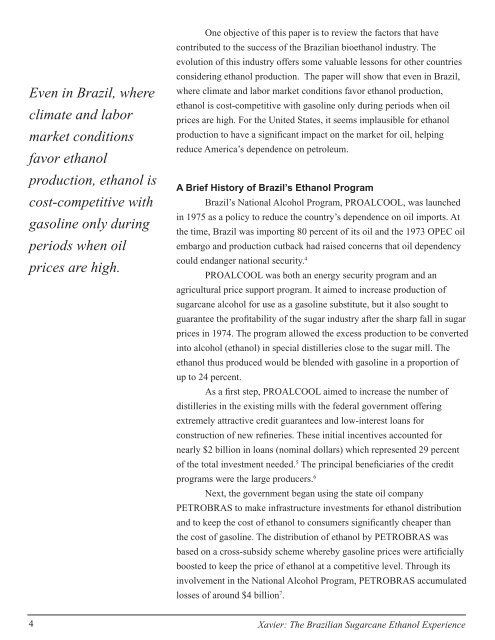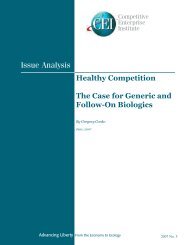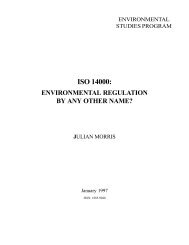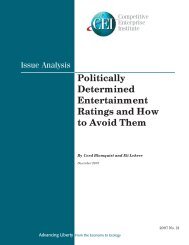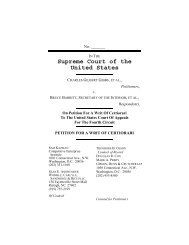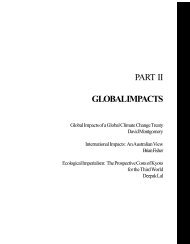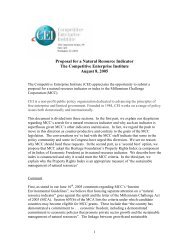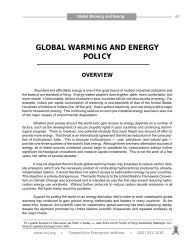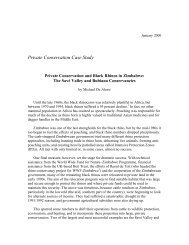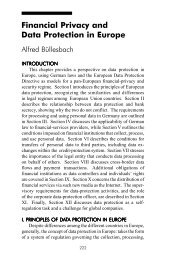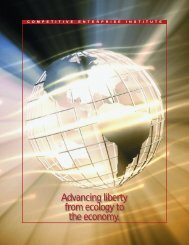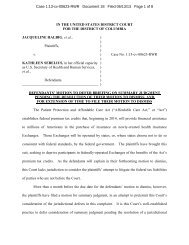The Brazilian Sugarcane Ethanol Experience - AgManager
The Brazilian Sugarcane Ethanol Experience - AgManager
The Brazilian Sugarcane Ethanol Experience - AgManager
You also want an ePaper? Increase the reach of your titles
YUMPU automatically turns print PDFs into web optimized ePapers that Google loves.
Even in Brazil, where<br />
climate and labor<br />
market conditions<br />
favor ethanol<br />
production, ethanol is<br />
cost-competitive with<br />
gasoline only during<br />
periods when oil<br />
prices are high.<br />
One objective of this paper is to review the factors that have<br />
contributed to the success of the <strong>Brazilian</strong> bioethanol industry. <strong>The</strong><br />
evolution of this industry offers some valuable lessons for other countries<br />
considering ethanol production. <strong>The</strong> paper will show that even in Brazil,<br />
where climate and labor market conditions favor ethanol production,<br />
ethanol is cost-competitive with gasoline only during periods when oil<br />
prices are high. For the United States, it seems implausible for ethanol<br />
production to have a signifi cant impact on the market for oil, helping<br />
reduce America’s dependence on petroleum.<br />
A Brief History of Brazil’s <strong>Ethanol</strong> Program<br />
Brazil’s National Alcohol Program, PROALCOOL, was launched<br />
in 1975 as a policy to reduce the country’s dependence on oil imports. At<br />
the time, Brazil was importing 80 percent of its oil and the 1973 OPEC oil<br />
embargo and production cutback had raised concerns that oil dependency<br />
could endanger national security. 4<br />
PROALCOOL was both an energy security program and an<br />
agricultural price support program. It aimed to increase production of<br />
sugarcane alcohol for use as a gasoline substitute, but it also sought to<br />
guarantee the profi tability of the sugar industry after the sharp fall in sugar<br />
prices in 1974. <strong>The</strong> program allowed the excess production to be converted<br />
into alcohol (ethanol) in special distilleries close to the sugar mill. <strong>The</strong><br />
ethanol thus produced would be blended with gasoline in a proportion of<br />
up to 24 percent.<br />
As a fi rst step, PROALCOOL aimed to increase the number of<br />
distilleries in the existing mills with the federal government offering<br />
extremely attractive credit guarantees and low-interest loans for<br />
construction of new refi neries. <strong>The</strong>se initial incentives accounted for<br />
nearly $2 billion in loans (nominal dollars) which represented 29 percent<br />
of the total investment needed. 5 <strong>The</strong> principal benefi ciaries of the credit<br />
programs were the large producers. 6<br />
Next, the government began using the state oil company<br />
PETROBRAS to make infrastructure investments for ethanol distribution<br />
and to keep the cost of ethanol to consumers signifi cantly cheaper than<br />
the cost of gasoline. <strong>The</strong> distribution of ethanol by PETROBRAS was<br />
based on a cross-subsidy scheme whereby gasoline prices were artifi cially<br />
boosted to keep the price of ethanol at a competitive level. Through its<br />
involvement in the National Alcohol Program, PETROBRAS accumulated<br />
losses of around $4 billion7 .<br />
4 Xavier: <strong>The</strong> <strong>Brazilian</strong> <strong>Sugarcane</strong> <strong>Ethanol</strong> <strong>Experience</strong>


